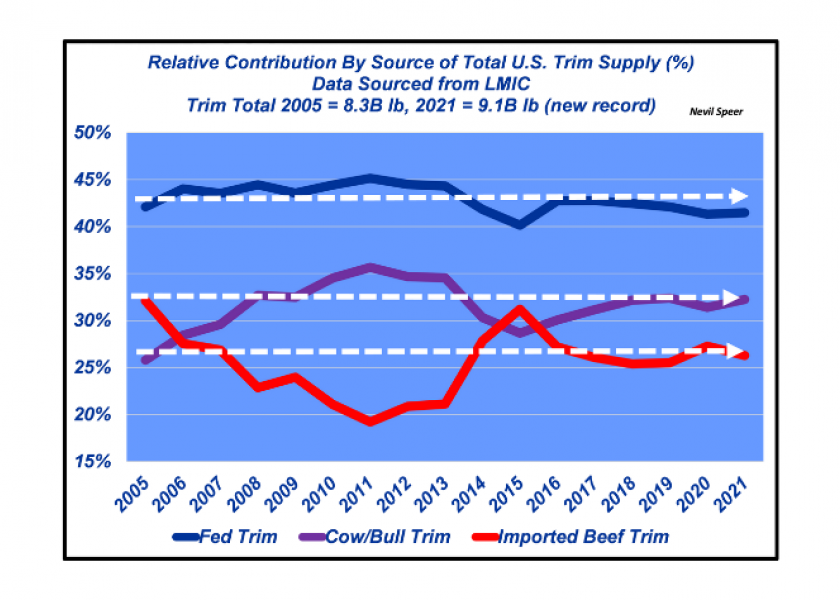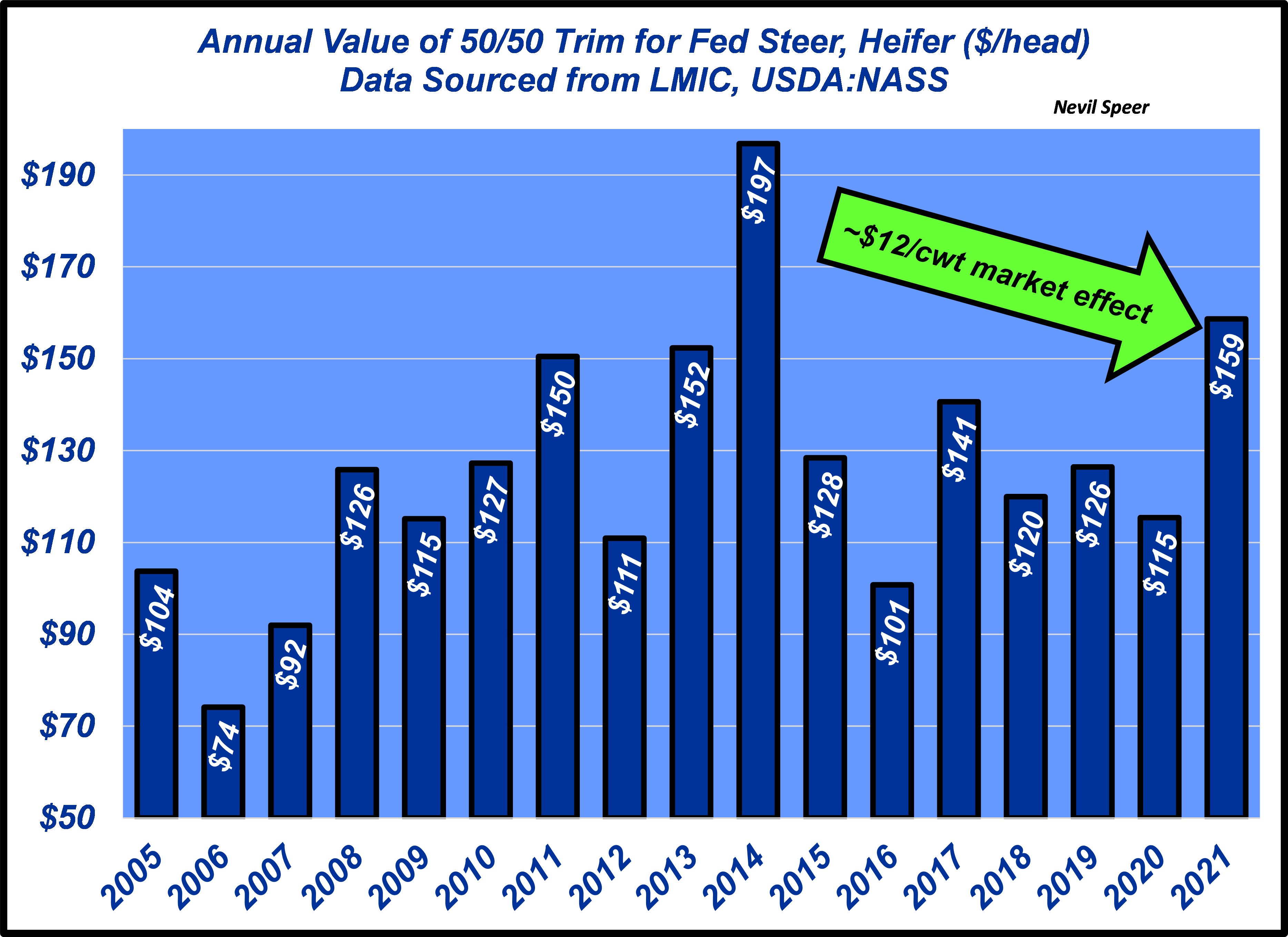Speer: Beef Imports Create Value for Both Consumers AND Producers

“We need to fix the beef import problem.” At least that’s what one person told me on the phone after reading my recent columns on international trade.
As quick review, the first column highlighted the product side. Since 2009, when beef’s trade balance returned to positive territory following BSE, exports have outrun import values by over $20B! The second column featured live animal trade. Net imports (including both feeder and slaughter cattle) in 2021 totaled only 1.357 M head – a new record low – and now represents only about 4% of total slaughter.
Those facts aside, the anti-trade faction believes beef imports undermine the industry. For example, one group includes the following statement in a PR toolkit for producers: “…imports can reduce the demand and price of domestic cattle because demand and price are sensitive to changes in supplies, including imported supplies.”
That assertion misses on several counts. First, imports don’t reduce demand – they increase supply. Second, demand is NOT “…sensitive to changes in supplies”; supply and demand are two separate functions possessing distinctly different dynamics. Third, “beef imports” is a broad term. Beef is not beef is not beef – there’s tenderloin, brisket, flank stead, ground beef etc…
Given those sweeping (and inaccurate) generalizations around “beef imports”, let’s zero in on the ground beef business. After all, it serves as the foundation for the bulk of international trade and enables us to better understand the import side of ledger.
The first chart below highlights respective contributions by source for the trimmings market (surpassing 9B lb in 2021 - a new record). Despite some ups-and-downs over time, sourcing for the trimmings market remains highly consistent over time. Domestic 50/50 fed trim represents roughly 42% of total supply. That gets blended with lean trimmings to make ground beef – split relatively evenly between the other sources: ~32% of trim supply comes from domestic cow/bull slaughter, the remainder (26%) is comprised of imported product.
Now let’s turn that into dollars. Last year’s production of fed beef (50/50) trim totaled nearly 3.8B lb and averaged $94.53/cwt. That equates to roughly $3.6B in 2021 – nearly $160/head – or $11-12/cwt - for every fed steer and heifer marketed in the U.S. (see chart #2) That trim would be essentially worthless if it weren’t for lean trimmings.
Now, what if we eliminated imports? Of course, the immediate effect is smaller ground beef supply: roughly half the lean trimmings volume would disappear from the marketplace. The fallout is anything BUT favorable:
- Producers get penalized: instead of 50/50 trim being worth $160/head, it’s now $80/head. And that’ll get translated back upstream as a $10-$15/cwt hit for every feeder calf leaving the farm or ranch.
- Consumers will get penalized: an absence of imported lean trimmings translates to a sharp supply shock. Consumers will subsequently have fewer options and be forced to pay more for ground beef.
- Demand destruction: ground beef is a huge, broad category – but also the one that most directly competes with pork and poultry. A sharp rise in prices, coupled with dramatic drop in availability, sets the stage for longer-run demand destruction while providing competitive proteins an immediate boost.
- Public relations crisis: how will ranchers / farmers explain to consumers they fought to eliminate imports only to have consumers pay higher prices? That’s especially challenging given the current inflationary environment.
Of course, the anti-traders would argue we can just cull more cows to make lean trimmings. But those won’t be dairy cows – the population has proven remarkably stable in recent decades. The job will be left to beef producers. Domestic compensation for loss of imported trimmings would inevitably cause the industry to shrink over time; it’s equivalent to killing the golden goose.
Bottomline: there’s no such thing as a “beef import problem.” It’d be far more problematic if imports disappeared. After all, beef imports don’t introduce competition – they establish complementarity. And the ensuing value creation benefits both consumers AND producers.

Nevil Speer is an independent consultant based in Bowling Green, KY. The views and opinions expressed herein do not reflect, nor are associated with in any manner, any client or business relationship. He can be reached at nevil.speer@turkeytrack.biz.







